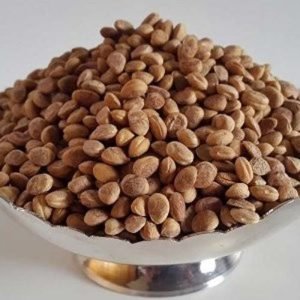Chia seeds may seem like a modern fad, but their use actually goes back hundreds of years. Many Native American tribes, such as the Chumash, Maidu, and Costanoan, ate chia seeds as a significant part of their diet, and the seed was grown alongside corn in some places in Mexico, according to the United States Department of Agriculture Natural Resources Conservation Service (USDA). But back then, chia seeds weren’t staples in breakfast bowls and smoothies. Some people mixed them with flour to make tortillas, while others combined them with water and cooked them to make a porridge or soup. The seeds even had medicinal uses, and were used to treat a range of ailments, from fever to inflammation, the USDA notes. Over time, this ancient seed grew in popularity — though not first as a popular superfood. Indeed, as the New York Times reports, chia seeds first resurfaced in our homes as a novelty item — in the form of Chia Pets, which were widely popular a few decades ago. Chia seeds are popular for weight loss. They reduce food cravings by preventing some of the food that you eat from getting absorbed into your system. This blockage of calorie absorption makes them a great diet helper.
They can also help your diet by making you feel full. This is because they absorb 10 times their weight in water, forming a bulky gel.They are also great for athletes because the “chia gel” can hydrate the body.There’s evidence to suggest they can reduce blood pressure. They are the richest plant source of Omega-3 (the vital fats that protect against inflammation—such as arthritis—and heart disease). In fact, they contain more Omega-3 than salmon! Because chia seeds slow down how fast our bodies convert carbohydrates into simple sugars, studies indicate they can control blood sugar. This leads scientists to believe chia seeds may have great benefits for diabetics.






Reviews
There are no reviews yet.